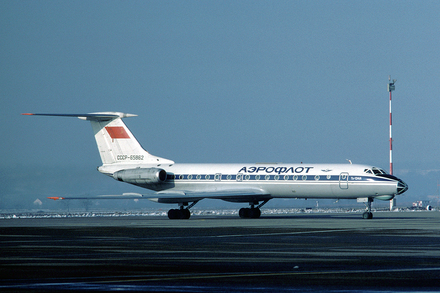Aeroflot-vlucht 6502
Aeroflot-vlucht 6502 was een Sovjet-binnenlandse passagiersvlucht, uitgevoerd door een Tupolev Tu-134A van Sverdlovsk (nu Yekaterinburg) naar Grozny, die op 20 oktober 1986 neerstortte. 70 van de 94 passagiers en bemanningsleden aan boord kwamen om. Onderzoekers hebben vastgesteld dat de oorzaak van het ongeval nalatigheid van de piloot is.
Achtergrond
De bemanning van het Tu-134A-vliegtuig, serienummer 62327 vervaardigd op 28 juni 1979, bestond uit gezagvoerder Alexander Kliuyev, co-piloot Gennady Zhirnov, stuurman Ivan Mokhonko, boordwerktuigkundige Kyuri Khamzatov en drie stewardessen. Vlucht 6502 vertrok vanaf de luchthaven Koltsovo in Yekaterinburg (toen Sverdlovsk) en was op weg naar Grozny, en had één tussenstop op de luchthaven Kurumoch van Samara (toen Kuibyshev).
